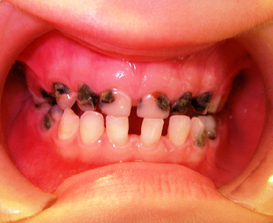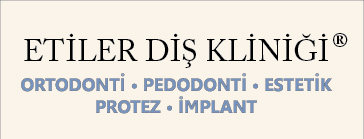Baby Bottle Tooth Decay
What is baby bottle tooth decay?This is a type of decay that starts with the front incisors and spreads quickly to the other teeth.
The initial signs of baby bottle tooth decay are chalky, white stains on the enamel of the teeth. With the progression of the decay, these chalky stains will take on a yellow-brown color. By the time the family becomes aware of the decay, it has usually already advanced and taken on a coffee color. These stains are actually cavities and can lead to breakage.
The key foods for infants, breast milk and cow’s milk, contain natural sugars. When a baby has either breast milk or drinks from a bottle before going to sleep, the milk makes the mouth into a very fertile place for decay.

My baby’s teeth have decayed although he/she does not eat from a bottle. What could be the reason?
Bottles and pacifiers are often given to babies to calm them or to keep them occupied during teething. These are often dipped in sweet substances such as honey or grape molasses. These kinds of foods are common causes of tooth decay in infants.
Why is baby bottle tooth decay important?If left untreated, baby bottle tooth decay can lead to pain and infection. This will cause the infant’s mood to worsen and his or her food consumption to become irregular. Infection also risks damaging the permanent teeth below. If the infected teeth have to be extracted prematurely, it could lead to speech impediments. If a space maintaining device is not used following the extraction, the permanent tooth will not have a guide for its eruption, which could lead to crowding.
What can be done to prevent baby bottle tooth decay?It is important not to allow your infant to sleep with a bottle. Of course, this is easier said than done. Therefore, dentists have other recommendations if that behavior is still continuing:
- Make sure that the milk you give your child contains no added sugar or honey.
- After feeding your child milk at night, rinse out his or her mouth with water.
- In the morning and in the evening use gauze to clean off any food remnants from your child’s teeth (even if there is only one).
- Finally, rather than giving your child high-carbohydrate foods (i.e. bread) to keep him or her occupied, give foods that increase saliva and keep teeth clean such as carrots or cucumbers.


